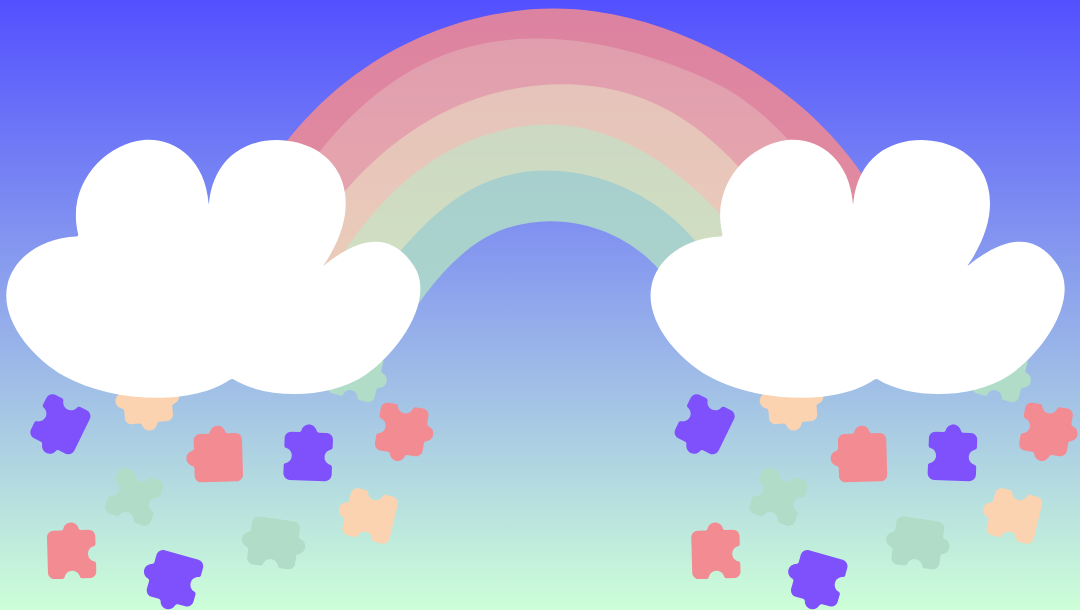A 2018 study of 310 adults diagnosed with Autism showed that 70% of them were not heterosexual. Another study reviews data from multiple countries and shows a pattern of increased Gender Dysphoria in patients at autism-focused health clinics. The overlap between neurodiversity (generally understood as the range of neurological differences among individuals, including autism, ADHD, dyslexia, and various other cognitive conditions) and queerness (the range of sexual orientations and gender identities that are not heterosexual or cisgender) is becoming more apparent. While the “WHYs” of this overlap are fascinating to explore, we want to focus on the universal practices that will ensure accessibility and inclusion for neurodiverse queer youth.
When we make programs, classrooms, and activities accessible for a youth who is queer and neurodiverse, we increase the accessibility and safety for all youth.
Below are some considerations for making a space welcoming, safe, and accessible for LGBTQIA2S folks who are also neurodivergent.
1. Sensory Considerations
Recognize and accommodate sensory sensitivities by providing quiet areas, dimmed lighting options, or sensory-friendly events. This can help individuals who experience sensory overload feel more comfortable and be able to be present. Allow attendees to leave the space as needed to self-regulate.
2. Clear Communication
Utilize clear and direct communication strategies, avoiding jargon or ambiguous language. Providing information in multiple formats, such as written, verbal, and visual, ensures accessibility for individuals with diverse communication preferences. Before an event, communicate what the sensory experience may be like, what the physical space will be like (comfy chairs, desks, auditorium, etc), and if there will be a quiet space to retreat to if needed.
3. Flexible Social Norms
Embrace flexibility in social norms and expectations to accommodate diverse social behaviors and communication styles. Encourage understanding and acceptance of differences in social interactions, recognizing that neurodiverse individuals may have unique ways of engaging with others. While it’s ok and understandable that people may be confused or uncomfortable with how an autistic person may communicate, the autistic person is likely even more confused and uncomfortable with unspoken social norms! Trust in best intentions, and find ways to meet everyone’s needs for communication and boundaries.
4. Allow for free expression
Queer youth need to be allowed to express who they are, and neurodiverse youth need to be allowed to express themselves through stimming and self-advocacy. Stimming is a self-stimulatory behavior that is repetitive and acts as a self-regulatory tactic for many neurodiverse individuals. It can be the repetition of physical movements such as tapping, shaking, flapping, or jumping, repeating sounds or words, or moving objects. Believe youth when they say they are LGBTQIA2S, and believe them when they say they have specific communication, stimulation, or boundary needs.
5. Training and Education
Provide training and education on neurodiversity and inclusivity to staff and community members. Increasing awareness and understanding reduces stigma and fosters empathy and support within the community.
6. Collaboration and Feedback
Engage neurodiverse individuals in the design and evaluation of inclusive practices, seeking feedback and collaboration to continuously improve accessibility and inclusivity efforts.
7. Be prepared for reactions due to overstimulation.
It takes experience, support, and courage to identify and ask for accommodations to prevent overstimulation. Even with all those things, a neurodiverse person may get overstimulated. Overstimulation reactions are different for everyone, but it is often useful to get that person to a dimly lit and quiet place where they are either alone or only surrounded by trusted individuals. For some, a tight hug, a weighted blanket, or firm physical pressure can help.
When we create programs, spaces, and relationships that are safe for both queer and neurodiverse youth, we are creating spaces that are more comfortable and accessible for all youth. Implementing some or all of these recommendations can significantly increase safety, participation, accessibility, presence, and belonging and lift up some of our most vulnerable youth.

